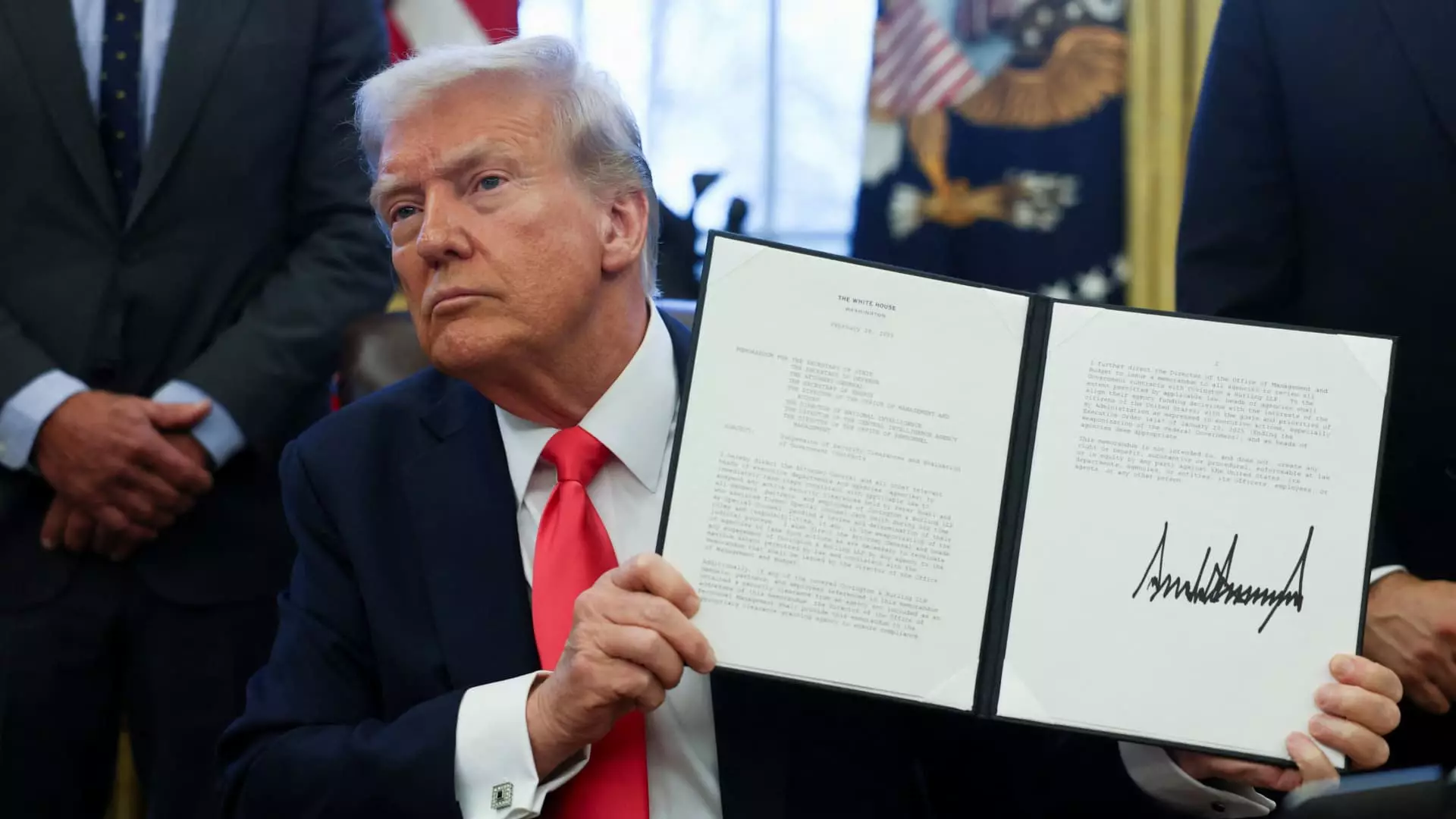On a recent Thursday, President Donald Trump made waves with his announcement regarding impending tariffs on imports from Mexico and Canada set to take effect on March 4. This decree is emblematic of Trump’s ongoing trade policies, which have stirred significant debate both domestically and internationally. Trump stated that the 25% tariffs on these neighboring countries, which were momentarily stalled, will be reinstated due to what he describes as an unacceptable influx of illicit drugs entering the U.S. from these borders. This bold assertion of escalating tariffs not only outlines his commitment to a tougher stance on drugs but also raises questions about the economic implications both for the U.S. and its trading partners.
Complicating the narrative is the conflicting information regarding the tariff implementation timeline. Despite the president’s decisive blog post, earlier statements from White House officials painted a different picture. Kevin Hassett, the Director of the National Economic Council, indicated on a CNBC segment that the president would assess tariff policies comprehensively after a forthcoming report due on April 1. This inconsistency raises concerns about the coherence of the administration’s trade strategy. Such mixed messages can sow uncertainty in both the markets and among key stakeholders, undermining confidence in U.S. trade relationships and revealing potential disconnects within the administration itself.
In a landscape marked by shifting trade dynamics, Trump’s tariffs are part of a broader strategy to renegotiate trade terms with countries deemed unfair or detrimental to U.S. interests. Beyond the proposed tariffs for Mexico and Canada, Trump also confirmed an additional 10% tariff on Chinese imports, effectively raising the total tariff rate on Chinese goods to 20%. This aggressive posture is part of Trump’s overarching narrative that portrays tariffs as tools for gaining leverage in international negotiations. However, while some may champion these measures as necessary for shielding American industries, critics argue that tariffs often lead to increased prices for consumers and potential retaliation from trading partners.
The potential economic implications stemming from the tariffs cannot be overlooked. Financial markets responded swiftly to the news, with Dow Jones Industrial Average futures reflecting a slight decline in response to the announcement, though they rebounded when the markets opened. This volatility underscores the sensitivity of investors to trade policy developments. Economists express concern that extensive tariffs could prompt a trade war, which, historically, has consequences that ripple across industries, affecting everything from consumer goods to agricultural products. The challenge lies in balancing protectionist policies with the need for robust international trade relations conducive to economic growth.
Alongside the tariffs on Mexico, Canada, and China, Trump’s administration is also pursuing broader reciprocal tariffs against any nations imposing duties on U.S. imports. This strategy emphasizes the administration’s resolve to counter perceived unfair trading practices, including value-added taxes levied by other countries. Proponents argue that such tariffs are justified responses designed to level the playing field for American businesses. However, they also raise the specter of escalating trade tensions that could complicate alliances and hinder collaborative efforts on global issues like climate change and public health.
As the March 4 deadline approaches, the implications of Trump’s proposed tariffs continue to unfold. Economists, business leaders, and international allies are closely scrutinizing this development, contemplating not just the immediate outcomes but the long-term effects on geopolitical relationships and economic stability. With trade being a pivotal factor in national economic health, the outcome of these tariff implementations could set precedents that shape U.S. trade policies for years to come. As observers await the results of upcoming studies and the administration’s subsequent moves, the narrative around tariffs will undoubtedly remain a contentious topic, further complicating the already intricate realm of international trade.


Leave a Reply